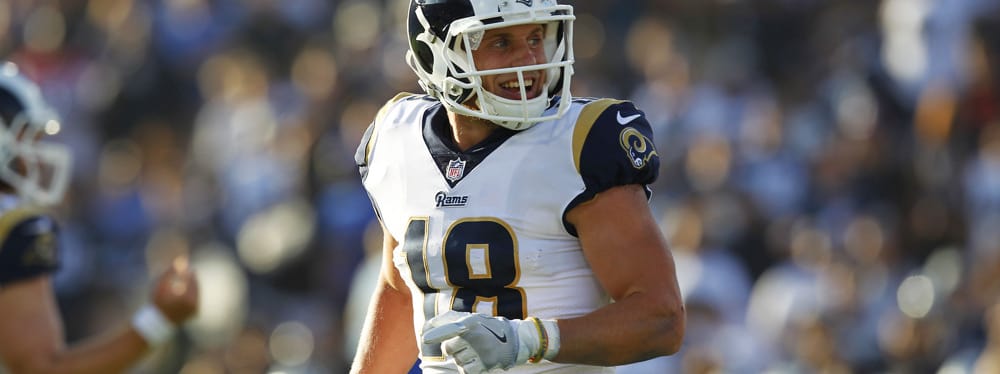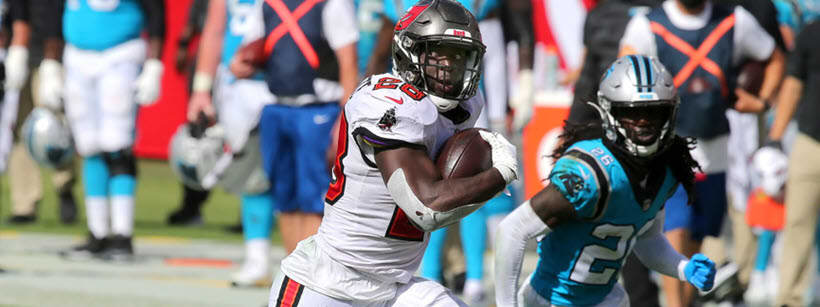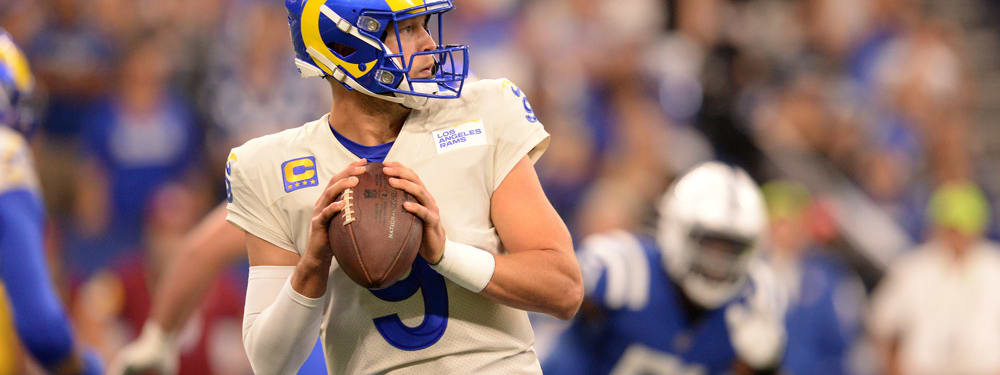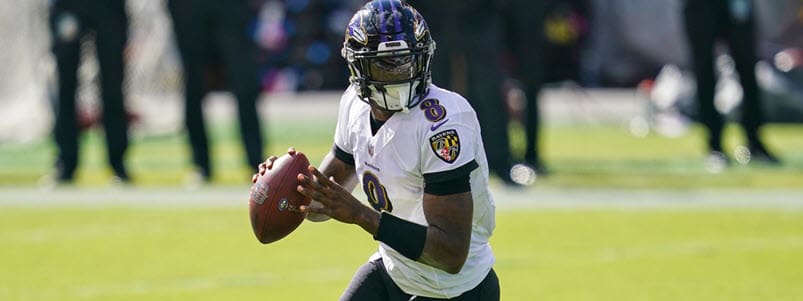Recent RotoWire Articles Featuring Marshawn Lynch
See More
Lynch, who turned 34 in April, remains a free agent, but his agent reportedly has been in talks with the Seahawks about the running back's potential return this season. Such an outcome does seem plausible, with Rashaad Penny (torn ACL) and Chris Carson (fractured hip) both recovering from significant injuries. For now though, Beast Mode, who came out of retirement last last season to bolster Seattle's backfield, is off the fantasy radar and could stay there if he ultimately chooses to step away from the game for good.
Early indications were that Beast Mode was headed for retirement once again, but he came out and said after the draft that he'd be willing to play in 2019 if the Raiders want him back. Lynch played in just six games last year as he was forced to undergo groin surgery in October, finishing with 376 yards and three touchdowns on 4.2 YPC. The Raiders selected Josh Jacobs in the first round, and he should serve as the team's primary running back. Free-agent addition Isaiah Crowell was expected to act as a bruiser out of the backfield, but he was lost for the season after suffering a torn Achilles. Lynch could very well rejoin the team to fill that role, but the 33-year-old likely would be a secondary option behind the rookie, limiting his fantasy potential.
It took a little while for Lynch to completely shake off the rust from his one-year retirement, but the 32-year-old began to look more like his Beast Mode self as the 2017 season progressed, rushing for at least 57 yards in each of his final eight games while scoring five of his seven TDs in that stretch. Following the strong finish, Lynch agreed to a restructured contract that ensures he will suit up in silver and black for at least one more season. He's the quintessential NFL power back, and even after his long layoff he still finished second in the league with 99 evaded tackles. The Raiders signed Doug Martin, but the two players' respective contracts suggest Martin is just an insurance policy rather than a major threat to Lynch's workload. While new offensive coordinator Greg Olson is known more for high-powered passing attacks than bruising running games, coach Jon Gruden preached old-school football all offseason, bringing in a lead-blocking fullback and locking down a pair of blocking specialists at tight end. Gruden will call the plays, which should bode well for Lynch, as should another opportunity to run behind one of the better offensive lines in the league.
After playing only seven games in 2015 due to a hamstring injury and abdominal surgery, Lynch announced his retirement prior to last season, but he then agreed to play for his hometown Raiders in 2017. As recently as three or four years ago, there was no better power back in the NFL than Lynch, who became a legend in Seattle with a Beast Mode nickname that, if anything, undersold how terrifying it was to try and tackle him in the open field. Four consecutive seasons with 300+ touches and 1,400+ yards from scrimmage (plus the additional wear and tear from multiple deep playoff runs) may have taken their toll, however, and there's no telling how much the 31-year-old will have left in the tank as he makes his return. Oakland does have a pair of dangerous scatbacks in DeAndre Washington and Jalen Richard to handle some touches, but Lynch is at his best when he's able to grind down opposition defenses before breaking their will in the second half, so a reduced workload may not make him any more effective. Few players are able to write a successful second chapter to their careers, much less a third, but a motivated and healthy Lynch may well prove to be an exception.
Lynch has expressed his full intentions to retire following a 2015 season in which he carried the ball 111 times for 417 yards and three touchdowns in seven games, but he could technically return to the Seahawks as he hasn't quite filled out all the necessary paperwork to put an official end to his NFL career. Thomas Rawls becomes the clear starter with Lynch's departure, while Christine Michael has another shot to prove himself in a backup role.
Debatable crunch-time goal-line playcalling by the Seahawks aside, 2014 was yet another hugely successful season for Lynch, who rang up more than 1,200 rushing yards and double-digit rushing touchdowns for the fourth straight season. Among the most physical running backs in the game, Lynch once again led the NFL in missed/broken tackles as well as average yards after contact, using elite burst and vision to rumble into and often through secondaries. He was also second in the league in carries inside the five-yard line, as he's proven both effective in short-yardage situations and durable enough to take the pounding. Seattle keeps him involved through the air, as well, and he's no fun for opponents to deal with in open space. Despite the club having enough confidence in him to extend his contract through 2017, Lynch's age and career workload are both at the stage when a typical running back begins to experience decline. Lynch isn't your typical running back, of course, but his skills and production will eventually erode, and possibly sooner than Seattle would like.
Once upon a time, Lynch was an enigmatic running back – a physical runner at 5-11, 215, but with only above-average speed for his position, he looked like he was never truly going to break out. But since his legendary 'Beast Quake' run in Seattle's January 2011 playoff win against the Saints, Lynch has evolved into one of the NFL's top workhorse backs.
Last year's NFL leader in broken tackles (59, eight more than No. 2 man LeSean McCoy), Lynch has now delivered three consecutive seasons of 285-plus carries, 1,200-plus rush yards and double-digit touchdowns. While he's not the kind of guy who's going to deliver the gamebreaking runs you might expect in your draft's first round, there's no overrating the steadiness that Lynch brings to fantasy rosters. Every week, he goes out there, drops the shoulder, and grinds out solid yardage with a good chance at scoring a touchdown. A red-zone regular, Marshawn saw a career-high (and league-high) 21 touches inside the five last year, though he converted on them at a markedly lower rate than he had in the prior two seasons. And while he saw his rushing total drop to 1,257 last year from 1,590 the year before, that still represents the second-highest mark of his career.
If there's anything to be concerned about here, it's all that mileage that Lynch has accumulated. He's done a lot of hard running these last three seasons, and at age 28, he's not a spring chicken anymore. That said, there's no doubt that he still has the goods, and he should turn in another high-level campaign this year in the productive Seattle offense. Russell Wilson's good at keeping the pressure off his backs, and the return of Percy Harvin will give opposing defenses even more to think about. And while reliable backup Robert Turbin and electric dark horse Christine Michael loom in the background, neither of them has proven able to steal carries from Beast Mode.
With a career-high 1,590 rushing yards in 2012, Lynch has now piled up more than 3,200 total yards and 25 touchdowns the last two seasons.
At 5-11, 215, Lynch ranked fifth among running backs with 639 yards after contact as defenses stacked the line early last season. But as rookie Russell Wilson and the passing game developed, Lynch enjoyed more running room, averaging 5.7 YPC over the final 10 games, scoring in eight of those contests.
Despite the emergence of Wilson and the acquisition of playmaker Percy Harvin, the Seahawks remain a run-first team behind All-Pro center Max Unger and Pro-Bowl left tackle Russell Okung. If anything, an improved passing game might open lanes for Lynch as defenses are kept honest and create more red-zone trips. Although he's entering his seventh season, Lynch is only 27 and has yet to eclipse 1,500 career rush attempts, so the wear and tear on his body is less than some might assume.
Lynch isn't much of a pass catcher, however – he had only 23 receptions last year and 28 in 2011, something that will cost him yards from scrimmage when compared to the league’s other workhorse backs.
Lynch was one of football’s biggest surprises last year, when he totaled 1,416 yards with 13 touchdowns, scoring in 11 consecutive games at one point. He managed just 4.2 YPC but also forced 52 missed tackles, the second most in the NFL, and he also went 8-for-13 at the goal line. Lynch lacks explosion and isn’t overly powerful, but he can make defenders miss at the second level and has suddenly become a reliable workhorse after mostly disappointing throughout his career. It’s tough to bank on last year’s stats repeating, but he just turned 26, so he’s still in his prime. Lynch re-signed with Seattle to a four-year, $32 million contract ($18 million guaranteed) during the offseason, so he’s the Seahawks’ lead back. The team hopes its offense will improve by signing Matt Flynn and the return to health of Sidney Rice, but it’s still hardly a juggernaut. Lynch carries risk since he’s not a great receiver and usually has a pedestrian YPC, but Seattle will once again treat him like a workhorse in 2012. Just realize you’re betting far more on role than skill.
After splitting work in Buffalo over four games, Lynch was traded to the Seahawks last season, where he was instituted as the team's lead back. It didn't result in a lot of fantasy usefulness, as Lynch averaged just 3.5 YPC and didn't add much as a receiver. He was running behind one of the worst offensive lines in football, but Lynch struggles to make defenders miss, his epic touchdown run in the Wild Card round notwithstanding. His 15 goal-line carries tied for the eighth most in the NFL, but he converted just five for scores. Seattle didn't address the running back position in the draft, so Lynch still sits atop the team's depth chart. But even if he again leads the Seahawks in carries, modest results are likely to follow.
Lynch hasn’t been a bust since entering the
NFL, but his production has hardly warranted
his high draft selection (12th overall in 2007),
either. He had a terrible season last year (one where he was suspended the first three games), gaining just 450 rushing yards while getting outplayed by undrafted Fred Jackson. With C.J. Spiller being drafted ninth overall, Lynch is suddenly third on the RB pecking order and a candidate to be traded, leaving his fantasy value entirely dependent on landing in the right situation. While not an elite running back, Lynch does have some talent and is a tough guy to tackle, so he needs to be monitored closely. If he stays in Buffalo, he can probably be ignored in most formats unless injuries occur.
Lynch improved as a receiver last season, which contributed to his 1,336 yards from scrimmage and nine touchdowns over 15 games. Still, his 4.1 YPC left a lot to be desired, as does his off-the-field behavior. Lynch will be suspended for the first three games of 2009 for violating the league’s personal conduct policy. There’s a small chance it gets reduced through appeal, but currently it’s not likely. Three games out of a typical 13-game regular season is a whopping 23 percent, and that’s assuming no additional time is missed through injury. Bottom line, the suspension significantly hurts Lynch’s value.
Lynch has proven to be a good, not great back over his two years in the league. He shows flashes of brilliance, breaking tackles and improving as a receiver, but in the end, the final results are underwhelming. He did average 5.3 YPC over his final four games last season, but he scored on just three of his 10 goal-line carries, giving him a terrible 30-percent success rate (6-for-25) over his career. Another concern is Fred Jackson’s emergence, as the undrafted back often outshines Lynch when given the opportunity. Jackson has averaged 4.6 YPC over his two-year career and is a major threat as a receiver. While Lynch sat with a shoulder injury during Week 17, Jackson ran for 136 yards on 27 carries in his place. The Bills’ offense should theoretically improve with the addition of Terrell Owens, but Trent Edwards had just 6.4 YPA with a 5:5 TD:INT ratio over the second half of last season. Owens and Lee Evans are nice weapons on paper, but Owens is 35 years old and will have to adjust to a completely new system. Moreover, the Bills offensive line is in shambles, especially after the loss of Jason Peters. What Lynch does have working for him, once he gets past the suspension, is that he sees most of the goal-line carries and he has a strong knack for fighting for extra yards even if he does lack the breakaway speed to peel off anything more than 10-12 yarders.
Lynch's rookie campaign can't be described
as anything but successful as he totaled nearly
1,300 yards in just 13 games despite playing in
a lackluster offense. Lynch's 4.0 YPC was uninspiring, but he's a much better receiver than last year's 18 receptions indicate. Even as a rookie, Buffalo leaned heavily on Lynch, as his 21.5 carries per game actually led the NFL. He fumbled only once. Lynch should only be better in his second year in the league and has the look of becoming a complete back who will be on the field every down, with some occasional spelling from Fred Jackson. He'll need to improve his blocking for it to happen, but he's worked hard in that area, which also should lead to bigger numbers in the passing game. He has a nice combination of strength and elusiveness. The Bills' offense is a work in progress, but at least Lee Evans demands opposing defenses' attention. Trent Edwards' development will play a key role in Lynch's production, but the early returns suggest 2008 is going to require a steep learning curve. New offensive coordinator Turk Schonert won’t make the same mistake Steve Fairchild did and will utilize Lynch's diversity by making sure he is heavily involved in the passing game, another positive for Lynch's 2008 outlook. At press time, Lynch confessed to a hit-and-run accident in which a woman suffered minor injuries – be sure to keep an eye on this over the summer before drafting him, though our best guess is he'll avoid suspension on a misdemeanor charge or traffic violation.
Lynch probably falls short of fellow rookie Adrian Peterson in long-term potential, but he should have more immediate success. With Willis McGahee out of town and only veteran Anthony Thomas competing for carries, Lynch could be the starter from Day 1, albeit with Thomas getting situational duty. While character concerns follow Lynch from his college days, he's a versatile back who rushed for 3,230 yards (6.6 YPC) and caught 68 passes for 600 yards in just three seasons at the University of California. He started 10 of 13 games as a junior, rushing for 1,356 yards and 11 touchdowns en route to being named the Pac-10 Conference Offensive Player of the Year. He also caught 34 passes for 328 yards and four scores. Rumors of a congenital disc abnormality in his lower back surfaced during the NFL combine, but most teams gave him a clean bill of health and do not believe it will lead to future problems. Lynch can be an explosive player, evidenced in 2004 when he touched the ball 13 times against Washington and had 201 all-purpose yards. Buffalo isn’t an offensive juggernaut, as McGahee struggled to put up big numbers there the past two seasons, but it’s an improving unit. J.P. Losman had 7.5 YPA during the second half of last season, and Lee Evans will demand constant attention from opposing defenses.













